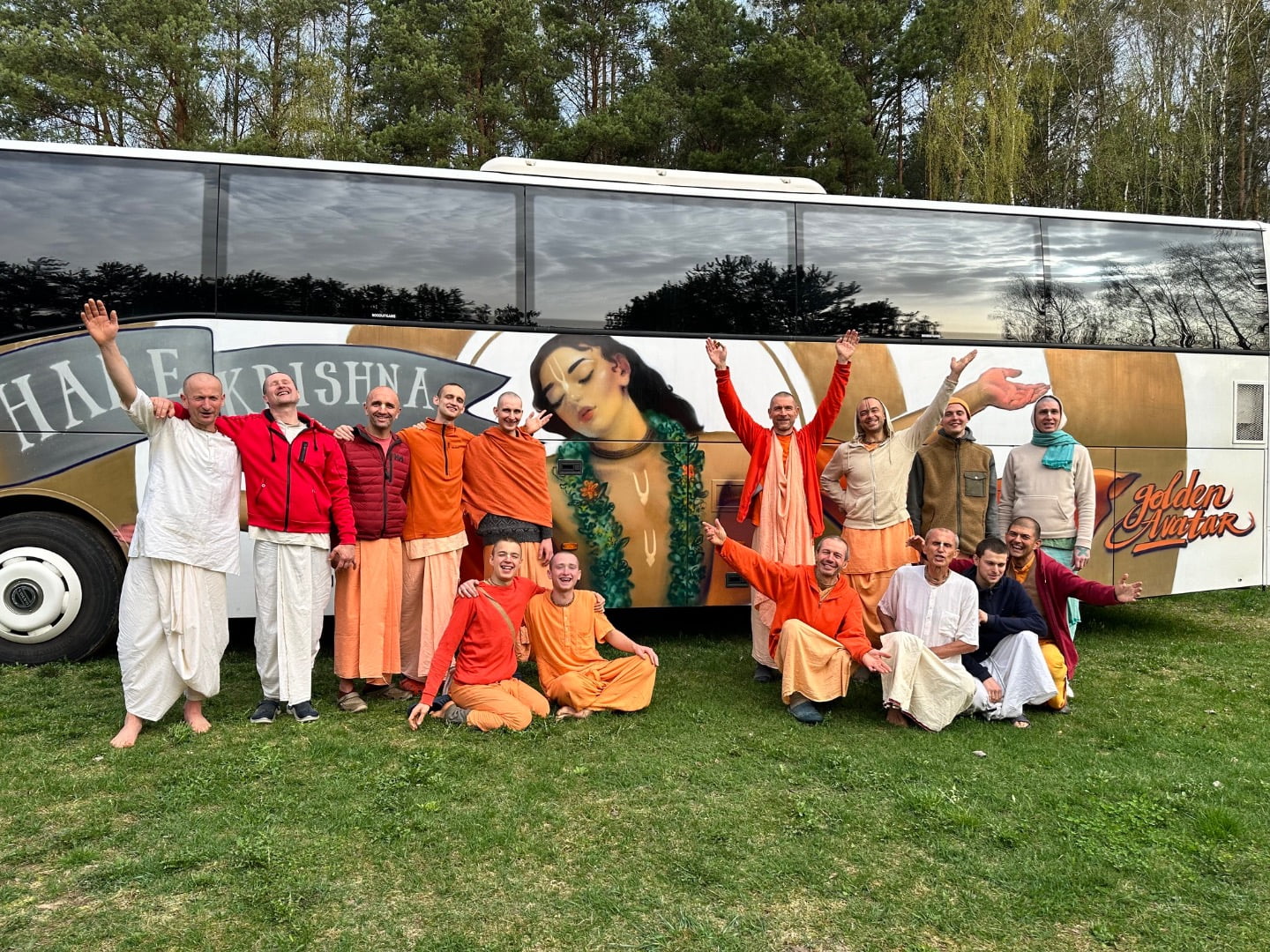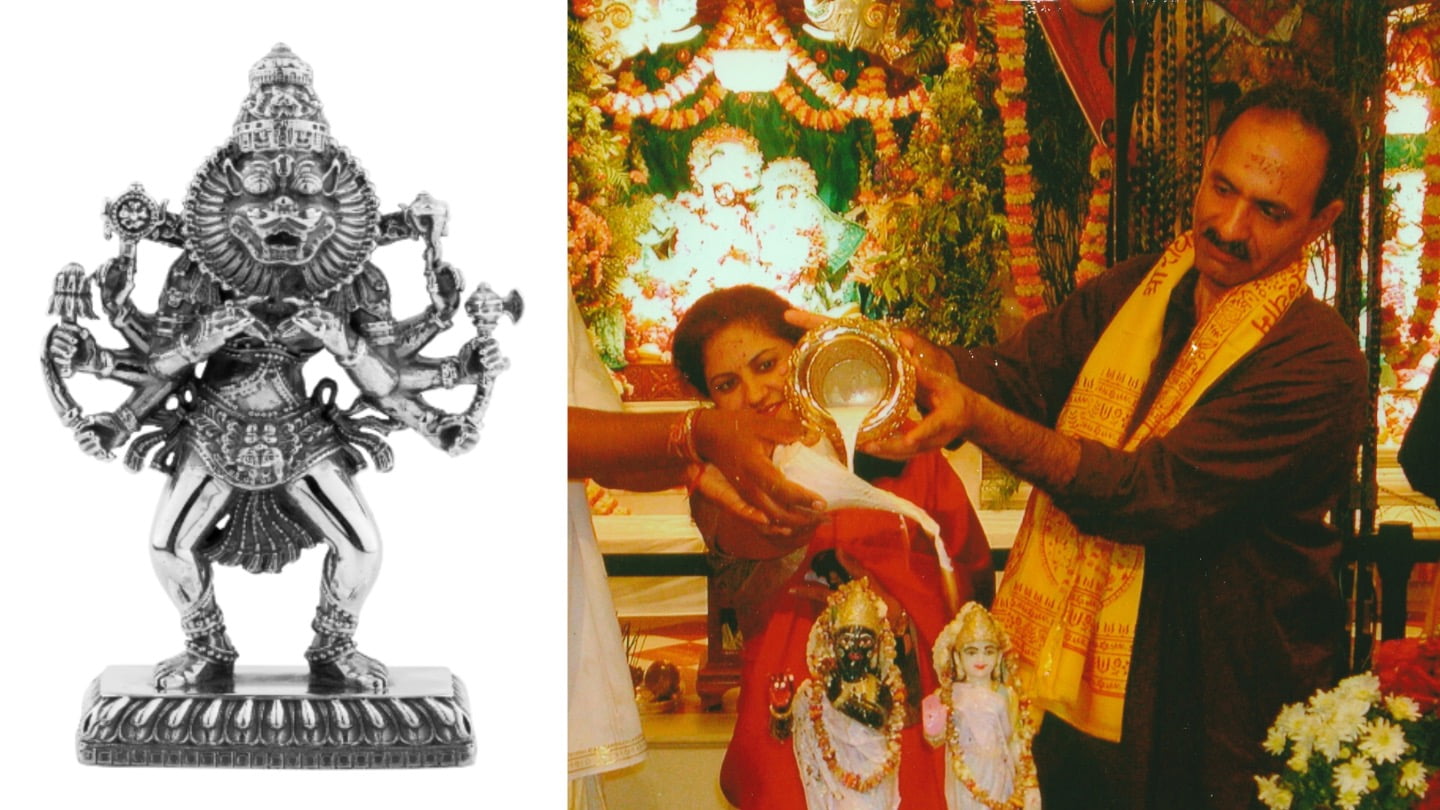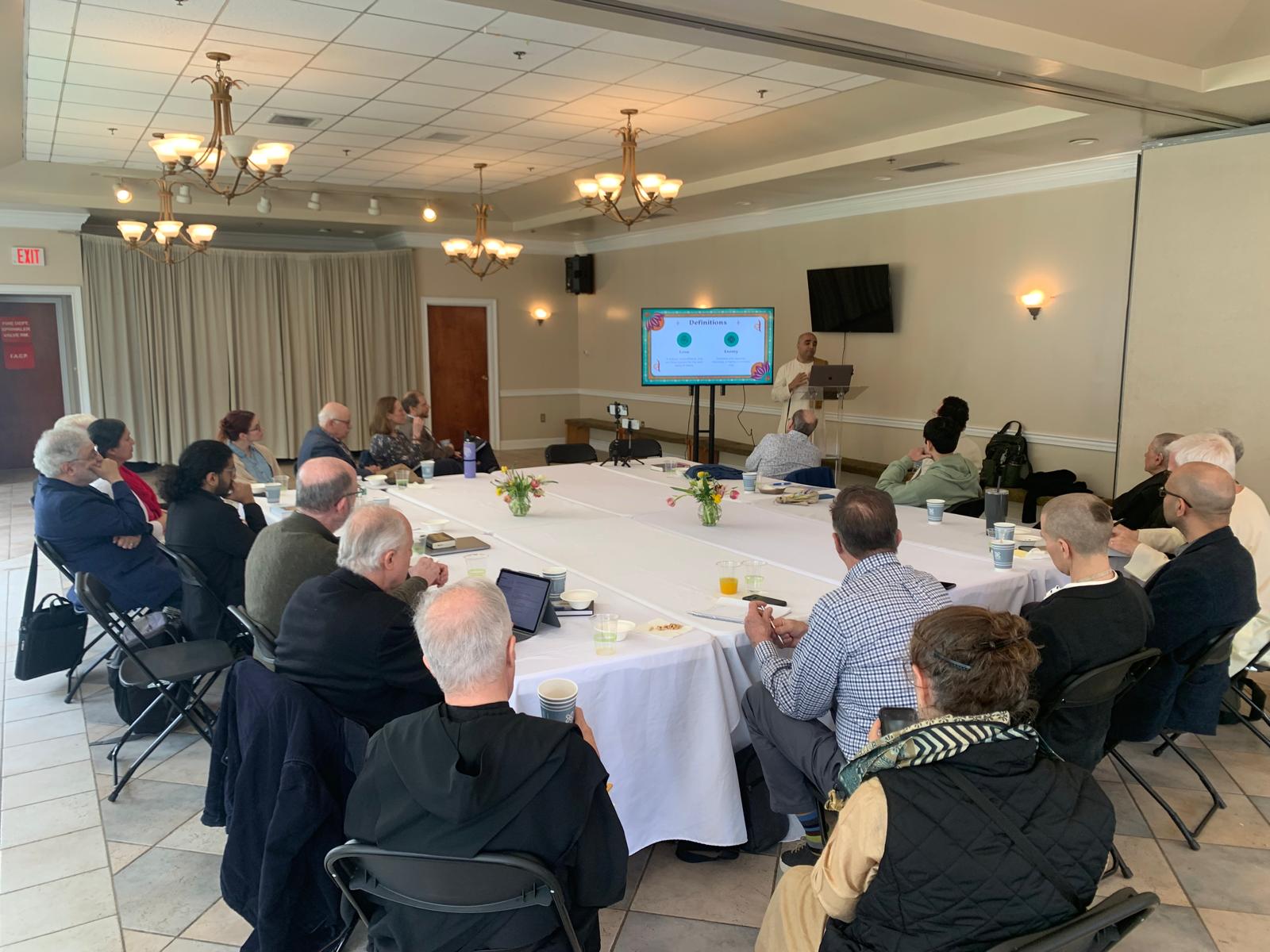Mukunda Goswami Shares Memories On 50th Anniversary of Mantra-Rock Dance
By Madhava Smullen | Feb 02, 2017

On Sunday January 29th in a special program at the New Govardhana Farm in Murwillambah, Australia, Mukunda Goswami shared memories of the Mantra-Rock Dance he helped organize fifty years ago on January 29th 1967.
The Mantra-Rock Dance concert was a key event in both ISKCON’s early growth and in the counterculture scene of the time, and commemorating it is an important part of ISKCON’s 50th anniversary celebrations.
After Srila Prabhupada established his first American temple at 26 2nd Avenue in New York City in 1966, he asked his early disciple Mukunda Goswami (who survived a triple-bypass heart surgery in 2015) and his then wife Janaki Dasi to open a similar ISKCON center on the West Coast of the U.S.
Mukunda and Janaki teamed up with their friends from college – who would become known as Shyamasundar Das, Gurudas, Malati Dasi and Yamuna Dasi – to open the center in San Francisco’s Haight Ashbury neighborhood, which was turning into a hippie counterculture hub.
In his fifty-minute talk, Mukunda Goswami recalled how he and his friends put on the Mantra-Rock Dance to raise funds for their new temple and popularize Prabhupada’s teachings in the counterculture scene.
Preceding the talk were introductions by Prabhupada disciples Alalanath Das and Urmila Dasi. Mukunda Goswami then succinctly yet very vividly reconstructed the zeitgeist of the late 1960s in San Francisco, the setting of the Mantra-Rock Dance. Pointing out that memories are triggered by smells and songs, he even played a short clip of ‘If You’re Going to San Francisco’ by Scott McKenzie to set the scene, to the surprise and amusement of the assembled devotees.

He then briefly described he and his friends’ efforts to put on the Mantra-Rock Dance at the Avalon Ballroom, explaining how they managed to get some of the most popular counterculture groups and figures, like The Grateful Dead, Big Brother and the Holding Company, Janis Joplin and Allen Ginsberg, to be in the lineup.
While a video of Srila Prabhupada’s arrival at San Francisco airport played behind him, Mukunda Goswami recalled how upon alighting from the plane, Prabhupada was very pleased to see a crowd of eager youths greet him by each handing him a flower.
Maharaja then conveyed to his audience the atmosphere inside the Avalon Ballroom hall as the bands warmed up the crowd until Srila Prabhupada appeared. As he entered the hall through the main entry, thousands of hippies spontaneously and respectfully parted, clearing his way to the stage.
Maharaja also recalled how Allen Ginsberg first explained the significance of the maha-mantra and kirtan in his own way and lead the chanting, until Srila Prabhupada took over the kirtan and led everyone in the audience in ecstatic singing of the Holy Name.
Srila Prabhupada concluded his kirtan with prema-dhvani, Mukunda Goswami recalled, and all the hippies, following the devotees’ lead, spontaneously bowed down while Prabhupada recited the prayers.
Maharaja concluded by describing how the Mantra-Rock Dance was pivotal for the establishment of ISKCON on the West Coast, securing the much-needed funds for the temple and dramatically increasing Sunday Feast attendance.

Interestingly, it also had an effect on popular culture, instantly catapulting the then-unkown band Moby Grape–which Malati Devi had stumbled upon and enlisted to perform along with the more famous groups—into stardom.
After his talk, Mukunda Goswami answered several questions about Srila Prabhupada’s ability to combine strict adherence to the principles of pure devotional service with innovative, non-conformist ways of involving thousands of people, of which the Mantra-Rock Dance became a prime example.
In response to a question by Urmila Dasi about the balance between innovative preaching tactics and following the tradition, Maharaja explained that the division between conservatives and liberals even in ISKCON is here to stay – but that Srila Prabhupada knew the art of combining both, primarily by inducing all to chant Hare Krishna.
After the talk, Mukunda Goswami signed copies of his book Miracle on Second Avenue, which documents the Mantra-Rock Dance, along with his other adventures in helping Srila Prabhupada establish ISKCON in the 1960s.
He also handed out printouts of the first page of the Wikipedia article on the Mantra-Rock Dance, with a QR-code that takes readers to the complete online article. This article was featured prominently on Wikipedia’s homepage on the 50th anniversary of the concert, complete with an image of the famous promotional poster with Srila Prabhupada.
The 50th anniversary celebration of the Mantra-Rock dance ended with a delicious Sunday feast, drawing nearly twice the usual attendance.
* * *
For all the details about the Mantra-Rock Dance, visit the Wikipedia page:
https://en.wikipedia.org/wiki/Mantra-Rock_Dance
Purchase Mukunda Goswami’s book “Miracle on Second Avenue” here: https://www.amazon.com/Miracle-Second-Avenue-Francisco-1966-1969/dp/0981727344/ref=sr_1_1?s=books&ie=UTF8&qid=1485983015&sr=1-1&keywords=miracle+on+second+avenue














